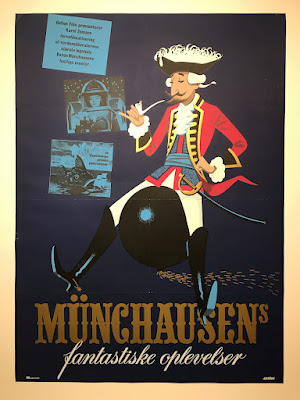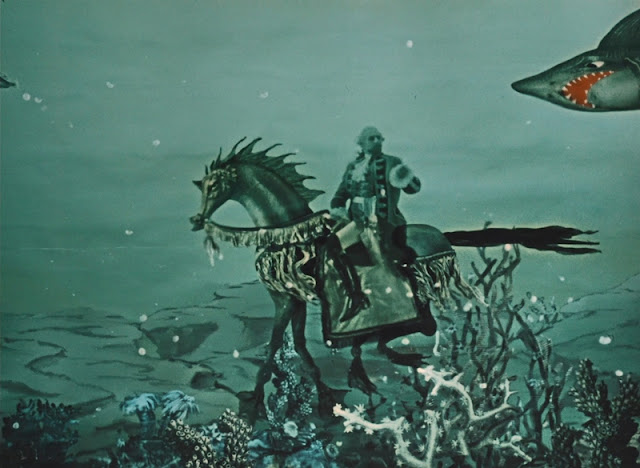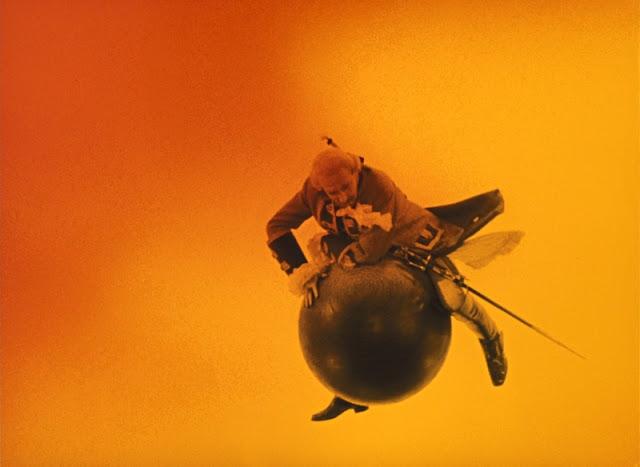Stone (1974) For those who weren’t there at the time (and I think that covers most of us), director/co-writer/co-star Sandy Harbutt gives us a taste of the Australian biker culture of the early ‘70s. The title refers to the main character (played by Ken Shorter), an undercover cop, who infiltrates biker gang, “The Gravediggers,” to investigate a series of killings of their members. Harbutt does a nice job depicting their gritty, freewheeling lifestyle. They live by their own rules, preferring to live on the fringes of society, instead of the 9 to 5 world. Stone becomes entranced by their scene, but can never quite be one of them. The film features some very good performances, including Harbutt as Undertaker, the gang’s leader, as well as many real bikers as extras. Hugh Keays-Byrne (Mad Max and Mad Max: Fury Road) steals the show as the hedonistic Toad.
Rating: ***½.
Available on Blu-ray, DVD and Tubi
Arena (1989) This low budget direct-to-video (at least in the U.S.) sci-fi action flick with big ambitions is as superficial as a bowl of sugary kids’ breakfast cereal, but diverting enough. Set on an intergalactic space station, Paul Satterfield stars as Steve Armstrong, a man who aspires to compete in what has become an aliens-only fighting match. Besides the fact that a human hasn’t competed in the ring in 50 years, he must contend with a crime boss and his toadies. Probably the film’s biggest distinction is that it featured three actors who would go on to star in two prominent ‘90s sci-fi series: Claudia Christian (Babylon 5) as Armstrong’s manager Quinn, and Armin Shimmerman and Mark Alaimo (Deep Space Nine) as the antagonists. The not-so-special effects and flimsy sets are nothing to write home about, but the unique creature designs are kind of fun. If nothing else, it’s easy to see the potential for this to be remade with a bigger budget.
Rating: ***.
Available on Prime Video and Tubi
Ruby (1977) Piper Laurie stars as fading has-been Ruby Claire, in director Curtis Harrington’s supernatural drama. When her gangster boyfriend is shot down (shown in the opening flashback scene), he vows revenge against the men who betrayed him. Flash forward 16 years later, with Ruby reminiscing about old times and running a backwoods drive-in theater. Leslie (Janit Baldwin), her special needs daughter, becomes the conduit for her deceased father’s spirit, as he exacts revenge against those who wronged him. The bodies pile up in a hurry, although the authorities never seem to snoop around. Laurie’s slightly unhinged performance is the only reason to see this near miss that never quite coalesces.
Rating: ***.
Available on Blu-ray, DVD and Midnight Pulp
he Monster of the Opera (1964) In director/co-writer Renato Polselli’s middling horror movie, a theater troupe is terrorized by a centuries-old vampire and his curse. He’s drawn to Giulia (Barbara Hawards), a dancer whom he believes to be his reincarnated lover (who also damned him to a life of vampirism). There’s some nice black and white cinematography, particularly with an opening dream sequence, but little else to recommend this one. It’s too bad The Monster of the Opera is mostly bark and little bite, filled with boring dance numbers, endless bickering, and more diaphanous negligees than a Jean Rollin film.
Rating: **.
Available on DVD and Midnight Pulp
The Incredible 2-Headed Transplant (1971) Bruce Dern stars as Roger, an enterprising young doctor experimenting with grafting second heads on animals. He longs to find a human test subject, and sees the perfect opportunity fall in his lap – transplanting the head of an escaped serial killer on the body of a giant mentally challenged man (you can probably guess this isn’t a brilliant idea before the murderous rampage ensues). Pat Priest plays his neglected wife Linda, who passively endures her husband’s shenanigans, and Casey Kasem co-stars as Ken, a colleague who suspects something unsavory is afoot. This movie makes the thematically similar The Thing with Two Heads (1972) look like a classic by comparison.
Rating: *½.
Available on Blu-ray, DVD and Tubi












